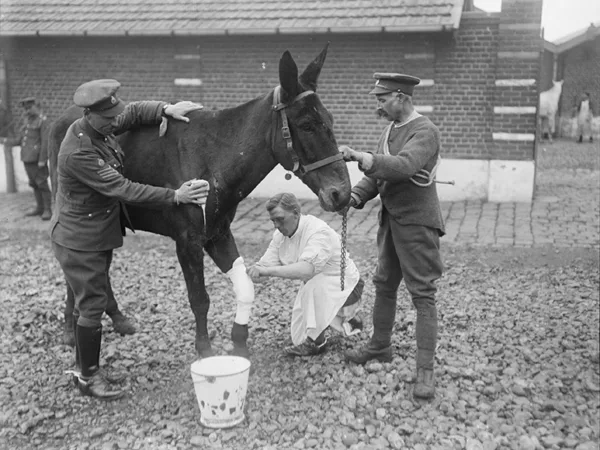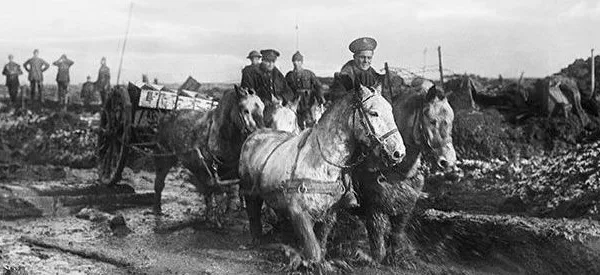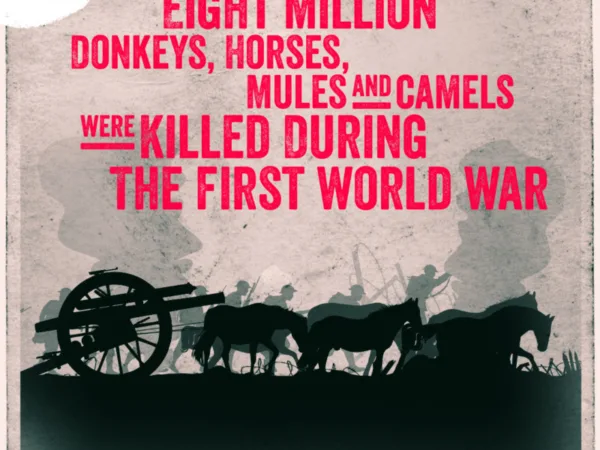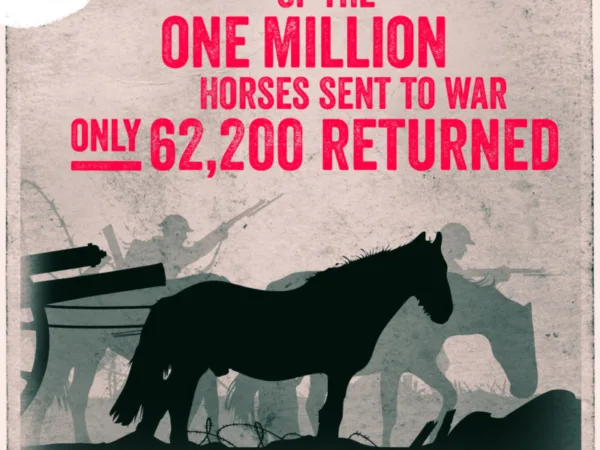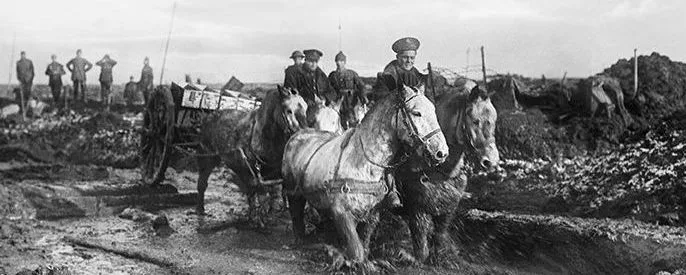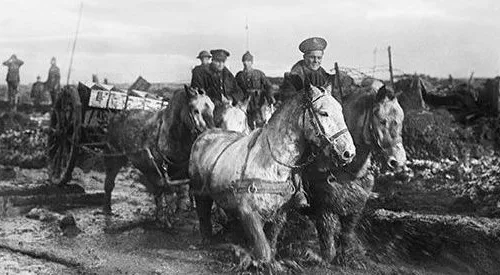Take a look at the timeline below to discover more about the impact of war on animals over the past century.
More than 16 million animals were made to serve on all sides, with nine million killed (including eight million horses, mules and donkeys)
100,000 homing pigeons carried messages to and from the trenches
During the British Army’s desert campaign in Sinai and Palestine, 50,000 transport camels carrying water, and mounted camel regiments (including the Imperial Camel Corps) formed the largest camel force the world has seen
7,000 horses died in one day alone at the Battle of Verdun
Britain had over one million horses and mules in service (over the course of the war Britain lost more than 484,000 horses)
The British Army Veterinary Corps gained the ‘Royal’ prefix for its efforts in mitigating animal suffering. This was the first war in which a trained veterinary service existed
The war saw the demise of roughly half of Spanish livestock, and post-war Spain had to import thousands of working mules from overseas
Britain became the first nation to motorise its army, and had begun to replace horse cavalry with armoured vehicles in 1928
Over 750,000 domestic pets were killed in Britain in one week following a government public information campaign about their safety and expected food shortages
The German Army on the Eastern Front lost 179,000 horses in two months
The British Army still employed 6,500 horses, 10,000 mules and 1,700 camels. In total, 200,000 animals – also including dogs and pigeons – were put into service by Britain
The British and Japanese in Burma used elephants for transport, building bridges and roads, and for pulling trucks out of the mud
14,000 mules were used by US military in northern Italy, and China used more than 20,000 mules in battles against the Japanese
Chinese and North Korean forces used mules to transport supplies, including during the 1951 Spring Offensive against South Korea
Use of Agent Orange to eliminate forest cover destroyed the habitats of tigers, Asian elephants, gibbons, civets, leopards and other species. At least 40,000 animals were killed by unexploded landmines in the 20 years following the war
Giraffe and elephant herds in the Gorongosa National Park shrank by 90 per cent
Populations of wild goat, wolves, otters, pelicans, striped hyenas, river dolphins and other wildlife were wiped out or reached the point of extinction
South Sudan’s elephant population fell from 100,000 to 5,000
Over 75,000 animals were lost due to mines – more than half of the total livestock population
More than 80 per cent of livestock in Kuwait died, including 790,000 sheep, 12,500 cows and 2,500 horses
A deliberate oil leak into the Persian Gulf by Iraqi troops caused the deaths of up to 230,000 aquatic animals and birds, while 100 mammals were killed
Kosovo’s cattle population reduced from 400,000 to 200,000
Military dogs supported British Special Forces operations. The UK Ministry of Defence said the role of the 11,000 dogs working across the armed forces ‘cannot be underestimated.’
Insurgents commonly strapped bombs to dogs to target convoys and used donkeys to pull carts of explosives for the same purpose
20 per cent of the animal population estimated to be lost – including 15,000 missing sheep and goats
